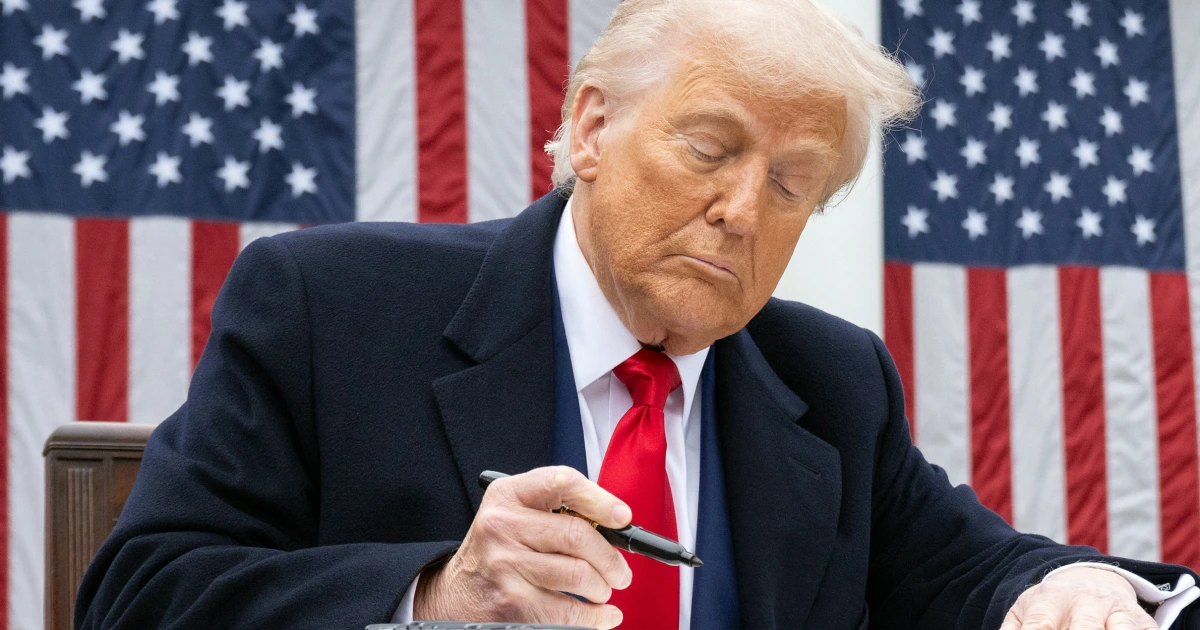Copyright MSNBC

Last week, President Donald Trump had what was arguably the worst week of his second term. And though the hits to him and his agenda came on several fronts, they had a unifying theme: affordability, as in the lack thereof. A mini-blue wave swept the off-year elections on Nov. 4, and the dominant force behind the wave was Americans’ intense, lasting discomfort with how much things cost. On Wednesday, during oral arguments at the Supreme Court, conservative and liberal justices expressed skepticism of the administration’s arguments that the president’s tariffs, which the justices widely agreed raised costs, were legal. Trump made things even worse for himself by first treating affordability as a surprising new issue: The Democrats, he told Fox News on Wednesday, “have this new word called ‘affordability,’ and [Republicans] don’t talk about it enough.” Then, a day later, he didn’t even “want to hear about affordability.” As MSNBC’s Steve Benen cataloged, Trump’s dismissal of cost-of-living concerns was accompanied by an avalanche of wrong numbers, including gems like “Energy costs, as and [sic] example, are plummeting.” Trump is overestimating the power of his alt-reality show. I could point out that it takes one mouse click to prove that consumers’ electricity bills have gone up 5% over the past year while overall inflation is up 3%. But, in fact, no clicks are necessary. Trump, whose political instincts are rarely this far off, is making a big, basic mistake: telling people they’re better off than they know they are. As Axios summarized the situation: “You can’t convince Americans your economic policies are working if they’re paying 20% more for a cup of coffee.” Especially when that price is largely a function of the 50% tariff you levied on Brazil (with which, for the record, the U.S. runs a trade surplus). Trump also keeps banging on about $2-per-gallon gas prices when no states are posting costs anywhere near that number. The national average Tuesday was $3.07, which is admittedly down from a year ago. By roughly 2 cents. But here’s the thing about gas prices. In 2022, thanks to both the pandemic and Russia’s war in Ukraine, a gallon of retail gas peaked at an extremely uncomfortable $5. It soon after starting sliding down and, by late 2023, landed at just about the same price it is today. Despite that 40% ($2 per gallon) decline, do you remember Americans feeling like their affordability problems were solved? Me neither. Why not? Because the affordability crisis is not about any one item. The affordability crisis involves housing (including home insurance), child care, groceries, higher education, utilities and all kinds of other expenses that operate like jump scares in a horror movie. If you’re spending more than a third of your income on housing and another third on child care — as many working-class families do — you’re solidly on the stressful side of that ledger. Meanwhile, Trump is having lavish dress-up parties at Mar-a-Lago and bailing out Argentina to the tune of at least $20 billion, while millions of Americans receive notices that their health insurance premiums are about to double. Why is a politician who talked so much about bringing prices down during the campaign now being so intensely dismissive of this issue? There are (at least) three reasons. The Supreme Court may well give Trump a priceless— or, more accurately, a price-reducing — opportunity. One is that Trump is overestimating the power of his alt-reality show. As long as he’s been in politics, he’s operated on the principle that if you can connect as deeply with your followers as he routinely does, they will believe what you tell them. In that world, tariffs don’t raise prices. Tax cuts lower the deficit. Crime is up. Immigrants eat your pets. But this Trumpian superpower demonstrably fails when it comes to affordability. As far as prices are concerned, consumers know which way is up. They’ve been saying so in polls for years now, through this first year of his second term. And those sentiments became actions in the most important polls last Tuesday night. Second, while Trump is often ideologically flexible, he carries a religious fervor for tariffs. Unless you’re paid to think otherwise, most everyone knows that tariffs are a tax on imports, a portion of which is passed through to consumers. Furthermore, tariffs fall harder on those with lower incomes, as imports tend to constitute a larger share of their spending. As an economist who has advised presidents, I am hard-pressed to think of a more ill-advised policy for an affordability crisis than tariffs. Remarkably, the Supreme Court may well give Trump a priceless— or, more accurately, a price-reducing — opportunity. Should the justices strike down the tariffs, his administration has the chance for a major course correction — a chance it almost surely will refuse to take. Instead, it will use the many tools at its disposal to replace any tariffs that get struck down. The president’s third problem is that the affordability crisis calls for something that he and the Republicans simply do not do anymore: objectively diagnose a problem and design policies to address it. Much of this policy work is just beginning, and that fact puts Trump and the Republicans at a huge disadvantage. Attacking the affordability crisis requires carefully designed policies to address market insufficiencies that have festered for decades. The child care market is wholly insufficient to parents’ needs. We suffer an affordable housing shortfall of at least 2 million units. The Affordable Care Act has widely expanded coverage and slowed the growth of health care costs, but large, structural problems and cost inefficiencies persist in our health care system. Progressive thinkers are actively pursuing policy solutions to meet these challenges. The Democratic winners on Tuesday night all had platforms built from planks of this work. I was struck, for example, by how New York City Mayor-elect Zohran Mamdani from the left and New Jersey Gov.-elect Mikie Sherrill from the center both ran on price controls (he on rents, she on electricity). But much of this policy work is just beginning, and that fact puts Trump and the Republicans at a huge disadvantage. Yes, Democrats have a steep pile of their own issues, but they still do policy work, while Republicans focus entirely on stirring up partisan rage and legislating tax cuts favoring the rich. Last week brought us a microcosm of this divide, which broke firmly against the president. The future is unknowable, but given the forces that are leading Trump and the GOP to dismiss affordability while Democrats work to solve it, the most likely outcome is for that divide to get a lot wider — to Democrats’ advantage.



